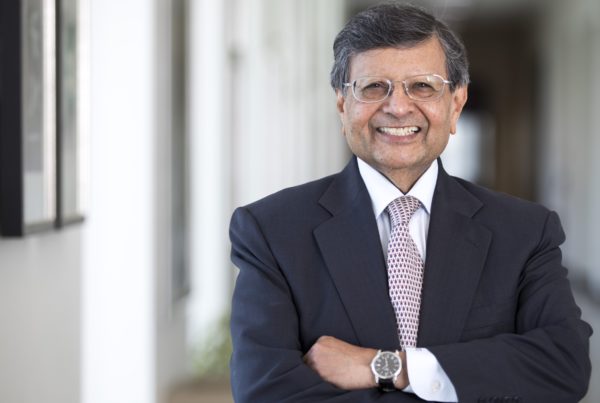Published: Oct 06, 2005 in Knowledge@Emory
In early June when fashion retailers and competitors Abercrombie & Fitch (A&F) and Gap Inc. reported May results, Gap’s sales were $1.17 billion, while A&F only posted $159 million in revenue. (June results were similar with Gap reporting net sales of $1.48 billion and A&F $221.6 million.) On the face of it, Gap swatted its competition, but numbers alone may not tell the whole story. Instead, according to experts at Emory University’s Goizueta Business School and elsewhere, the different marketing strategies of the two companies provide important lessons to many industries about reaching a critical segment of the economy — teenagers.
Following the May announcements, analysts at companies like A.G. Edwards were calling A&F CEO Mike Jeffries “the single most skilled specialty apparel product person we have met in our 22 years of researching and working in the retail industry.” Meanwhile, despite sales that were nearly 10 times the size of A&F, Gap Senior Vice President Sabrina Simmons was telling shareholders that, “Overall, total company sales were disappointing in May and merchandise margins were meaningfully below last year.”
The teen market is vital for both A&F and for Gap. But Gap’s sales to this segment have been trending lower on a month-over-month basis. In contrast, tiny A&F is ratcheting up impressive gains. No doubt Gap’s management is wondering just what’s going on. Part of the answer may relate to the unique needs of the teenage audience.
Young adults are big spenders
“In 1999, the teen segment accounted for about $153 billion of direct spending,” observes Michael Wood, a vice president with Teenage Research Unlimited. The Northbrook, Ill. company tracks youth buying patterns with companies in the apparel, electronics, financial and other industries. “In 2004, Generation Y [generally defined as people born in the late 1980s and 1990s] accounted for $169 billion in direct, discretionary spending. That doesn’t even consider the amount that parents spend on teens, or the family spending that’s influenced by them.”
Jagdish Sheth, a chaired professor of marketing at Goizueta, points out that in addition to being heavy spenders, teens are trend-setters, and says they help to determine tomorrow’s best-selling products.
“Their influence is almost a reverse intergenerational one,” Sheth suggests. “The younger generation becomes the innovators and opinion makers for the older generation. It’s a fast-changing market, and manufacturers have to leverage it accordingly.”
“For a long time, teenagers were typically influencers in their parents’ buying decisions, but now they form an important consumer decision making segment in their own right,” adds Susan Hogan, an assistant professor of marketing and affiliated assistant professor of psychology at Goizueta. “With so many two-income families and consequently, a concurrent shortage of free parental time, parents are now more likely to give their teens money. This lets the teens make their own purchases, and lets them make many of the low-cost family purchases as well.”
The fashion industry may be a leading indicator
Hogan says the outsized impact of teen spending is perhaps most evident in the fashion industry. “We all use products as a way to express our identities,” she notes. “For adults, it may be the car you drive, the job you hold, or the neighborhood in which you live. However, teens are constrained on what types of products they can use to express their identities—as typically, their parents control where they live, the kind of car they own, etc. Consequently, fashion items, such as clothing and accessories, are the products that teens look to in order to help them define and express their identity.”
But tastes among teens are fluid—reflecting the storm of conflicting emotions that characterize adolescence—and a style that’s “in” one month can easily be discarded the next, cautions Hogan. And when it comes to branding, the product is not the only item that a teen is buying.
“With teens, the buying decision is based on the perceived manufacturer-retailer-consumer relationship as well as the product,” she says. “So if teens feel that anywhere along the line they are being treated in a condescending manner, they’ll be turned off. Additionally, teens like products that are sincere, that is to say products and companies that don’t try to be something that they clearly aren’t.”
For teens, truth in advertising counts
She notes that companies have taken a hit for claiming, in promotional activities, to be something that they really weren’t. For example, Hogan cites Oldsmobile’s unsuccessful attempt to attract a younger market.
“Having the very name—Olds—as part of the brand name didn’t help their efforts to attract a younger market,” she explains. “Moreover, GM compounded the error when it launched a last-ditch advertising campaign that proclaimed ‘This is not your father’s Olds.’ The phrasing, of course, made younger buyers associate the brand with their father’s generation. This meant that even individuals who weren’t familiar with the Oldsmobile line now knew that there was, at one time, a link between this product and their father’s generation. Ultimately, GM retired the Oldsmobile division.”
The mixed message behind the Oldsmobile brand raised questions about GM’s commitment to the youth market. Today Hogan sees similar problems with Gap’s teen campaign.
“This is another example of needing to be careful to be what you claim to be,” reports Hogan. “It also illustrates the way that extending a brand into new customer markets can change the overall image of your brand for the worse, even with your original customer base.”
She says that another challenge Gap may have faced this past season—and perhaps the reason why their teen designs were not perceived to be quite as fresh and new as that of their competitors—is that Gap is trying to be too many different things to its varying audiences.
“Gap has recently been trying to expand its brand name to the 35-plus market,” observes Hogan. “During this process it seems that Gap has not effectively kept up on the latest trends taking place with their core teen market.”
In contrast, Abercrombie & Fitch has cultivated an edgy, though controversial image with a series of advertisements and catalogues that were seen by many observers as overly sexually suggestive. Meanwhile, Abercrombie’s comparable-store sales, a closely watched retailing measure, climbed 19% in May on a year-over-year basis. At Gap, they declined by 8%.
According to Wood, from Teenage Research Unlimited, companies are more interested than ever before in the teen marketplace. “The teen segment currently accounts for about 33 million people in the U.S., the highest level ever,” he says. “And it’s not even expected to peak until 2010, when teens should account for about 35 million individuals.”
A picky market, but a lucrative one
Wood notes that “the good news” for companies is the fact that teens are very interested in new products and willing to experiment with different brands. “So there aren’t necessarily a lot of barriers that new entrants have to overcome,” he says. “The question is whether or not they’ve got something that meets the market’s needs, and if it can be presented in a new, exciting way.”
“Since teens are trend setters, if the company they patronize no longer offers trend-setting products, the market discovers or creates new companies and products,” notes Sheth.
Wood meanwhile, says that Unilever got it right when it launched Axe in 2002, inventing the new male grooming subcategory called body spray.
“A few years ago, guys weren’t interested in a fragranced product called body spray,” he says. “But Unilever approached it in a fun, irreverent way and created a new product category.”
The Axe ads are somewhat suggestive, and perhaps just as important, were heavily deployed on the Internet. It’s a media tool that has been embraced and utilized primarily by the teen market, with regard to interactive advertising messages, in the same way that their parents’ generation gravitated to television. This is an important message for advertisers to note, says Emory’s Hogan.
Meet the needs of your target audience
“Companies need to fit their message into their target audience’s current lifestyle,” she says. ”For teens, this often means utilizing the Internet for a pitch. Finally there’s a greater chance of success if the campaign doesn’t preach to them or talk down to them, but rather lets them draw their own conclusions.”
She says the Axe commercial, with its images of gorgeous women falling for Axe-scented males, gets the message across quickly, with a minimum amount of verbiage.
Wood, meanwhile points out a campaign that didn’t work. “A few years back, JC Penney aired a commercial that showed a teenager wearing low-rise jeans walking out the door. Her mother suddenly chases after her, and tugs at the jeans, pulling them down a bit more,” he says. “It was supposed to be cutting-edge, but it didn’t work. Penney’s just doesn’t have the image. Diesel or Calvin Klein might have pulled it off. But not JC Penney. Generation Y has lived through a lot, developed a tough layer and sees through fakes. They’ve also got many more choices than their parents did.”
In addition to Unilever, some other companies understand what it means to market to teens, says Hogan.
“Procter & Gamble gets it,” she says. “Their commercials typically use straight talk and stay true to their image. Other companies are trying to copy the strategies of Unilever, P&G and others, but teens are a challenging and important target market. It’s one that marketers need to be sure not to underestimate or overlook.”




